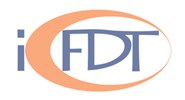Speaker
Anthony J.H. Donné
(FOM-Institute for Plasma Physics Rijnhuizen)
Description
In the future generation of fusion reactors, the power generated by the fusion reactions substantially exceeds the external input power (Pfusion/Pin ≥ 50). Twenty percent of the generated fusion power is carried by the charged alpha particles that carry a large fraction of the plasma kinetic energy and can collectively drive certain types of magneto-hydrodynamic (MHD) modes, while they can suppress other MHD modes. The scientific challenge in the field of burn control is to find the proper balance between desired and detrimental effects of the various MHD modes and to develop methods and tools for active feedback control of such modes. An important complication arises from the fact that the external heating power is small compared to the heating power of the alpha particles. To be able to develop control strategies, it is necessary to understand the dynamics of the system, in this case the mutual interactions between the fast alpha particles and the MHD instabilities.
As a demonstration fusion power plant, DEMO will have to demonstrate reliability and steady-state operation, which calls for unprecedented robustness and reliability of all diagnostics (also requiring adequate redundancy). But DEMO will have higher levels of neutron flux, fluence, nuclear heating, gamma irradiation and plasma irradiation than ITER. In particular the neutron fluence will be ~50 times higher than in ITER. This implies that diagnostics that marginally work in ITER are likely to be inappropriate in DEMO. This holds especially to many in-vessel diagnostics, for which there seems little prospect for improvements that would make it possible to use them in DEMO in a similar way as in ITER.
The development and demonstration of new DEMO-proof diagnostic techniques is a time-consuming process that should be started now. This specifically holds for the irradiation testing because of the high fluence levels in DEMO: Although future experience with diagnostics in ITER and irradiation testing in IFMIF will give important input for the DEMO diagnostics, many of the results will come too late, since at the end of the DEMO Conceptual Design Activity one has to have a good idea of which diagnostics will work and how they can be integrated into DEMO. It is likely that some DEMO-relevant diagnostics will not provide measurements of certain parameters with the same quality as non-DEMO-relevant diagnostics on present devices, and therefore will not be of benefit as a diagnostic to those devices. Nevertheless, such new diagnostic techniques must be developed and this needs to become an accepted part of the fusion programme.
It is important to develop a new way of thinking with respect to the present one in which diagnostics are often afterthoughts: if certain diagnostics are essential for the control of DEMO and the future fusion reactors, they have to be taken seriously during the entire design phase, as for example their replaceability or the required screening against radiation may have a large impact on the design of the reactor. One should realize that the lack of suitable diagnostic techniques may affect the options for controlling the reactor plasma, in particular the ability to run "advanced" scenarios. This lack of diagnostics, and thus the reduced set of plasma parameters that can be measured, will make modelling more important in fusion reactors to derive the other parameters. Advanced predictive/analysis codes need to be developed to combine data from various diagnostics in an intelligent way in order to reduce the number of required diagnostics. Benchmarking of this should be done on ITER.

